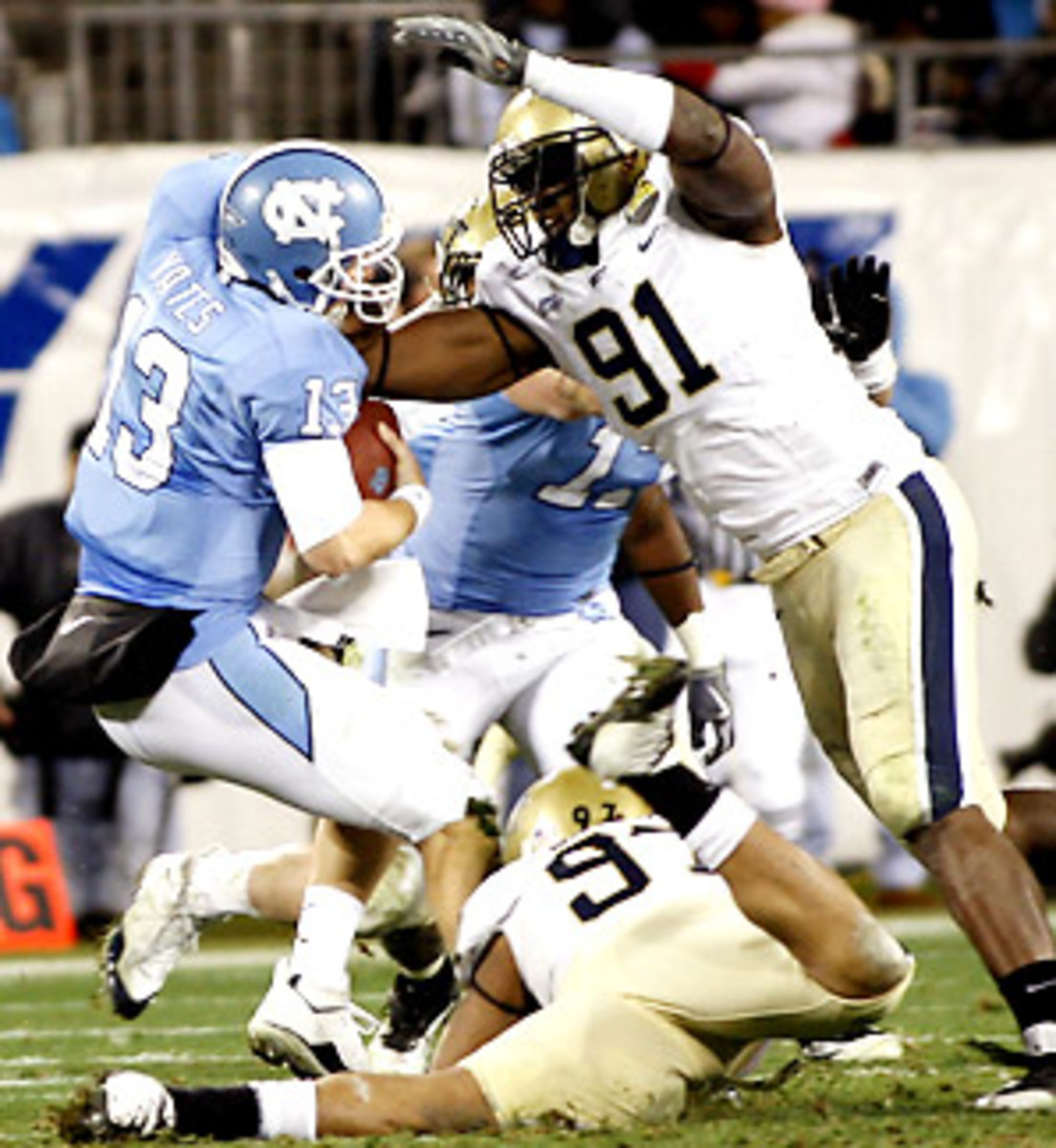As Pitt DE Romeus grew into star, Panthers grew into contenders
Two weeks before National Signing Day in 2006, Pittsburgh coach Dave Wannstedt stared at a screen.
The highlight video wasn't much -- a tape passed along to then-Pittsburgh assistant Charlie Partridge during the American Football Coaches Association Convention a week or so earlier. The kid's school, Coral Glades High in Coral Springs, Fla., was playing its first year of varsity football. The kid had come out because the coach saw a tall, lean body and begged. Half the season had been wiped out by a hurricane. Akron and Central Florida were interested in the kid. Hardly anyone else was.
Allegedly, the kid was a linebacker/defensive end. On the highlight tape, Wannstedt didn't remember a single sack.
It didn't matter. Two plays stuck in the coach's mind.
"I remember watching him run down the line of scrimmage to make a play," Wannstedt said. "Then I remember him turning and chasing someone down from behind. Obviously, that got my interest."
Wannstedt told Partridge to get Greg Romeus to Pittsburgh for an official visit. If, in person, he seemed like the type of guy who would go to class and be a good teammate, Romeus would get the Panthers' final scholarship for the class of 2006. On the visit, coaches met a bright young man who had no idea anyone would consider him for a football scholarship until December of his senior year. "After 10 minutes," Wannstedt said, "you knew he was the type of person you wanted on your team." Said Romeus: "It was a really shocking thing. It was also a really humbling thing that they would really want me."
But before he could grow into the Big East co-defensive Player of the Year and one of the stars of a team expected to win Pitt's first Big East title since 2004, Romeus had a lot to learn. Most importantly, he had to learn how to start each play.
A few months after Wannstedt watched Romeus run down a ballcarrier on tape, Romeus crouched on Pitt's practice field while his fellow defensive linemen pointed and laughed. "When he first came, he was 220 pounds," said offensive tackle Jason Pinkston, who came to Pitt in 2006 as a defensive tackle. "He was tall and lanky, and he couldn't even get into a stance to rush the quarterback."
Romeus, who had played only basketball until his senior year of high school, had no idea football could be so complex. "I thought I could figure it out," he said. "Then I got here." The alignments, calls and on-the-fly adjustments left Romeus' head swimming. But he studied. He tinkered. He learned how best to combine an arsenal of swim, rip and spin techniques to combat any tricks an offensive tackle could devise.
Romeus also grew. The lanky freshman grew into a 270-pound junior who could mix brute strength with blistering speed. Wannstedt had a feeling watching that original tape this might happen. He had coached Leon Lett with the Dallas Cowboys and Jason Taylor with the Miami Dolphins. Both were undersized for their positions; Lett entered the NFL as a 260-pound defensive tackle, and Taylor entered as a 243-pound defensive end. Both were chosen by Wannstedt's former boss, Jimmy Johnson, who built the University of Miami into a national power using a speed-first philosophy. Wannstedt clearly paid attention. "Jimmy Johnson was probably the best talent evaluator," Wannstedt said. "He was as good as any of them. Being with him for 18 years, we kind of had a philosophy and a mindset of the kind of athletes we were looking for.
"Every one of our defensive ends at Miami and Dallas, they were all guys that were converted linebackers. Our defensive tackles were converted defensive ends. Our outside linebackers were strong safeties. There is a science to this madness."
Romeus figured out the stance, and after a redshirt season, he figured out how to get to the quarterback. As a redshirt freshman, he made 11.5 tackles for loss and was named a freshman All-America. As a sophomore, Romeus made 15.5 tackles for loss (7.5 of them sacks) and was named second-team All-Big East. Last season, his signature game came against Notre Dame when he intercepted Jimmy Clausen, blocked an extra point and hit Clausen to force a fumble that the Panthers recovered to clinch a 27-22 win.
Now, opposing linemen never laugh when they see Romeus in a crouch. "He's low to the ground," Pinkston said, "and he's looking at the ball and he's just breathing smoke."
Pinkston, Romeus' roommate since the players were freshmen, said tackles should quake if they see Romeus lined up wide of the tight end on their side. Linemen use a numerical system to announce where their opponent has lined up; the outside eye of the guard is a three-technique, outside eye of the tackle is a five, and outside eye of the tight end is a seven. When Romeus lines up wide, he appears to come blazing off the sideline. "It seems like a 15 to me," Pinkston said.
Once Romeus begins moving, Pinkston said, little can stop him. "You might think you're helping yourself by kicking out real fast," Pinkston said. "Then, the next thing you know, he takes one or two steps and he's underneath you."
At that point, Romeus can use sheer force or a dazzling array of moves to reach the ballcarrier. Not bad for the last guy in the class who didn't know how to start a basic football play when he arrived at Pitt. "Now," Pinkston said, "he looks like he's been doing it all his life."






